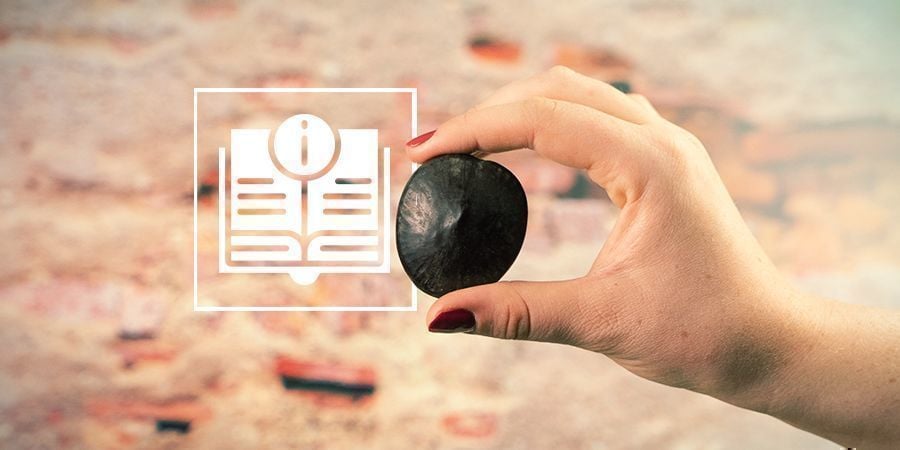-
Seedshop
-
Feminized
Cannabis seeds -
Autoflowering
Cannabis Seeds -
Regular
Cannabis Seeds -
F1 Hybrid
Cannabis Seeds -
CBD
Cannabis Seeds -
Zamnesia
Cannabis Seeds
-
Top 10’s
- Top 10 Feminized Seeds
- Top 10 Autoflowering Seeds
- Top 10 Regular Seeds
- Top 10 USA Cannabis Strains
- Top 10 Zamnesia Seeds
-
Favourites
- Beginner Strains
- Below 1% THC
- Classic Cannabis Strains
- Cup Winners
- F1 Hybrids
- Fast-Flowering Strains
- High CBD Strains
- High THC Strains
- Mix Packs
- Zamnesia Exclusive Collabs
-
-
Headshop
-
Vaporshop
- Spare Parts & Accessories
- AirVape X
- AirVape XS GO (2021)
- Arizer Air MAX
- Arizer Extreme Q
- Arizer Solo 2
- Arizer V-Tower
- Arizer XQ2
- Boundless CFC 2.0 Vaporizer
- Boundless CFX
- Boundless TERA (V3)
- CRAFTY+
- DaVinci IQ2
- DaVinci IQC
- DaVinci MIQRO
- Dr. Dabber Boost EVO
- Dr. Dabber Stella
- DynaVap Omni 2021
- DynaVap VapCap "M" PLUS 2023
- DynaVap VapCap 'M' 2021
- DynaVap VonG (i) Titanium
- Dynavap The "B" Series
- Eagle Bill
- Firefly 2+
- Flowermate Aura
-
Healthshop
-
Smartshop
-
Shroomshop
-
Growshop
-
Seedshop
All CategoriesSeedshop
-
Vaporshop
All CategoriesVaporshop
- Top 10 Vaporizers
- Spare Parts & Accessories
- AirVape X
- AirVape XS GO (2021)
- Arizer Air MAX
- Arizer Extreme Q
- Arizer Solo 2
- Arizer V-Tower
- Arizer XQ2
- Boundless CFC 2.0 Vaporizer
- Boundless CFX
- Boundless TERA (V3)
- CRAFTY+
- DaVinci IQ2
- DaVinci IQC
- DaVinci MIQRO
- Dr. Dabber Boost EVO
- Dr. Dabber Stella
- DynaVap Omni 2021
- DynaVap VapCap "M" PLUS 2023
- DynaVap VapCap 'M' 2021
- DynaVap VonG (i) Titanium
- Dynavap The "B" Series
- Eagle Bill
- Firefly 2+
- Flowermate Aura
- Flowermate Cap Pro
- Flowermate Slick
- Flowermate V5.0S Pro
- G Pen Connect
- G Pen Elite II
- G Pen Micro+
- G Pen Pro
- G Pen Roam
- Hydrology9 Vaporizer
- Hyer Big-E Rig
- MIGHTY
- MIGHTY+
- PAX Mini
- PAX Plus
- PLENTY
- Pax 3 Vaporizer
- Puffco Peak PRO Smart Rig
- Puffco Peak Smart Rig
- Puffco Plus
- Storm Vaporizer
- The Proxy (Puffco)
- VOLCANO CLASSIC
- VOLCANO HYBRID
- Vape-Lifter
-
Smartshop
All CategoriesSmartshop
- Top 10 Smartshop
- Zamnesia Gift Cards
- After Party
- Aphrodisiacs
- Aromatherapy
- Blue Lotus
- CBD Vape Juice
- Capsule Machines
- Crystals, Gemstones & Minerals
- Dream Herbs
- Drug Tests
- Extracts
- Happy Caps
- Herbal Tea
- Herbs & Seeds
- Incense
- Kanna
- Kratom
- LSA Seeds
- Mescaline Cacti
- Microdosing
- Nootropics
- Relaxing
- Salvia divinorum
- Smart Seeds
- Stimulants
- Supplements
- Tinctures
- Vape Herbs
-
TRIBE
All CategoriesTRIBE
- My Membership
- Spend Gift Points
- Exclusive products
- Earn Extra Gift Points
-
TRIBE
- Early Access
- Refer a Friend
- Information
-
TRIBE
-
Language
 United States
United States
Friday, 25 April and Thursday, 01 May 2025*
African Dream Seeds: Everything You Need To Know
The African dream seed has a long, storied history of use by indigenous African tribes and other cultures around the world. Today, it’s still known as a key to the world of lucid dreams.
If you have a friend that's experienced lucid dreaming before, you'll know. The only sign you'll have to look for is the fact that they never shut up about it. But here's the thing about lucid dreaming: Once you’ve experienced it, you might find it hard to shut up too. It's normally not a common experience, but when it does happen, it can give you a whole new perspective on your dreaming mind. That being said, we have a way for you to enter that new world easier than ever before. It comes in a small, convenient package, courtesy of Mother Earth, and it's known as the African dream seed.
WHAT ARE AFRICAN DREAM SEEDS?
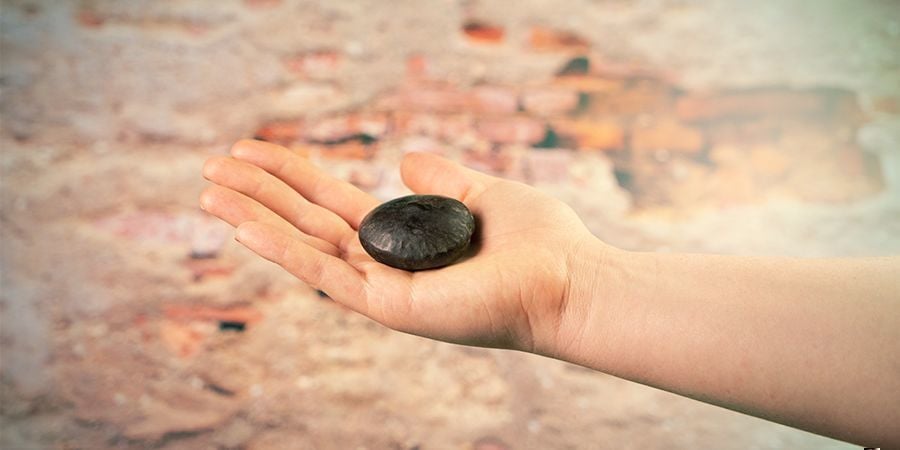
Known scientifically as Entada rheedii, the African dream herb is a climbing vine native to the southern tip of Africa. Despite the name, though, it's also indigenous to the Asian continent, Australia, and Madagascar. Within these areas, it can usually be found near bodies of water or other high-moisture areas like tropical lowlands, forest thickets, and rainforests. It can grow up to 75 metres long, bearing a fruit in the form of a hefty woody pod. Inside this pod, you'll find shiny, dark brown seeds that measure around 50 x 35mm on average. These, as you might suspect, are African dream seeds.
TRADITIONAL USES AND HISTORY

At this point, you're likely wondering how they earned their enticing name. This answer lies in South Africa, amongst the indigenous peoples’ shamans. In their practice, they'd prepare these seeds to induce lucid dreams in their subjects. In turn, these lucid dreams were understood to help connect the individual to the spirit world. In the spirit world, they could then connect to, and learn from, their ancestors. This practice is centuries old, and even continues in some capacity today, which we'll discuss later.
This wasn't the only use in South Africa, though. If coffee beans were out of season or unavailable, the people would brew a fresh cup using these seeds instead. They found a similar use over in the Philippines. There, you could enjoy a cup of tea made with these same seeds, along with parts from the rest of the plant. This tea had a holistic purpose as well, though. To be specific, it was believed this tea could be good for blood circulation.
Traditional herbalists also discovered ways to use it outside of consumption. By breaking down the seed into a paste, people in countries across Southeast Asia would use it as a soothing salve. It was also believed that shampoo made from the seeds could be used to benefit the scalp and hair. They'd also be worn in South Africa as jewelry. They look cool, sure, but that wasn't the main reason for wearing them. Rather, it was their supposed magical ability to grant the wearer good luck.
Aboriginal tribes in Australia also found use for them. There, tribesmen would leach them in water to get rid of toxins, cook them in stone ovens, and eat them for their nutritional value. They might have also experienced the lucid dreaming effect, but the association hasn't been explicitly noted.
WHY INDUCE LUCID DREAMING?
Speaking of lucid dreaming, we should also take some time to explain why you'd want to do it. Along with that, for those unfamiliar, we should also explain what it actually is. In short, lucid dreaming refers to the sensation of being able to control your movements and surroundings within your dreams. Essentially, your dream becomes a blank canvas for you to convey whatever you desire.
Speaking of canvases, the artists amongst you might be especially interested in practising lucid dreaming. Think about it; when you're able to turn anything your brain can think of into your perceived reality, there's no limit to the amount of creative experiments you can perform. Want to see what a castle of your own design would look like inside and out? Just imagine it and you're there! Want to improve the experience for audience members watching you perform? Just picture you watching yourself on stage, and think about what you'd want to see yourself doing. You can play a song you're writing, perform a dance you're choreographing, or sculpt a statue you're forming from stone. The only limit is your imagination.
Even if you're not artistically inclined, there are still benefits to be enjoyed. If life isn't going your way, for instance, and you need to get away from it all, diving into a lucid dream could be the perfect way to relieve the tension that's built up in your waking hours. If you've lost someone you love, you can have them with you in your dream, talk things out with them (or, rather, the version of them you knew), and find some much-needed closure. Even if life isn't dragging you down, it's nice to remember just how powerful your mind is, and lucid dreaming enables that exact realisation.
MODERN USE: EFFECTS AND CONSUMPTION METHODS OF AFRICAN DREAM SEEDS
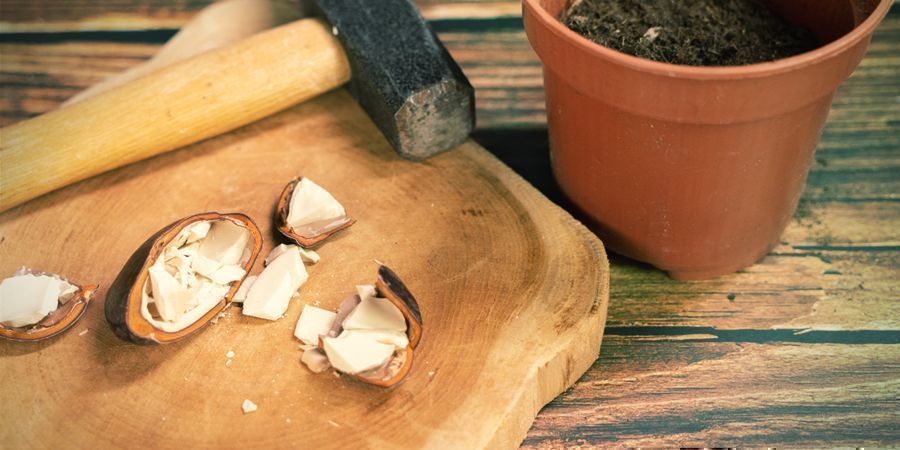
So, we know how people used to use these dream seeds, and we now know exactly why they did that in the first place. That leaves yet another question: How do people use them now? As it turns out, things haven't strayed too far from the old days. If you go to South Africa, you'll still find traditional practitioners preparing and administering these seeds to help trigger lucid dreams. It's now understood, though, that it doesn't cause lucid dreams in and of itself. Rather, it induces the sort of vivid dreaming that, in turn, sometimes leads to lucid dreaming.
This is still an appealing benefit. Now, with seeds available via online stores, people have taken it upon themselves to experience dream seeds in action. This is perfectly safe to do from home, although it's important to know exactly how it's done. You have a few options here, each as valid as the next. Whichever you choose is up to your personal preference and goals.
EAT THE SEEDS
Eating the inside is one of the main ways people consume this seed. You'll first want to crush the outer shell, perhaps using a mallet or similar device. Once you have the shell separated from the inner meat, you can eat it just like that. It's not a five-star meal. In fact, it's quite bitter. Once it's down the hatch, though, you can head to bed and go straight to a vivid dreamworld.
MAKE TEA
Lastly, if you'd rather sip it than eat it, you still have the option to make tea. As in the other process, crack that outer shell and get the kernel separated from it. From there, chop it up, break it down, and get it into a tea infuser. After you immerse the bagged inner seed in hot water for about five minutes, your tea will be ready to drink.
DOSAGE
As with any other mind-altering substance, there's a recommended dosage. Generally, if you're eating or drinking it, you'll only need one seed's worth of flesh to achieve the desired effects.
GROWING AFRICAN DREAM HERB
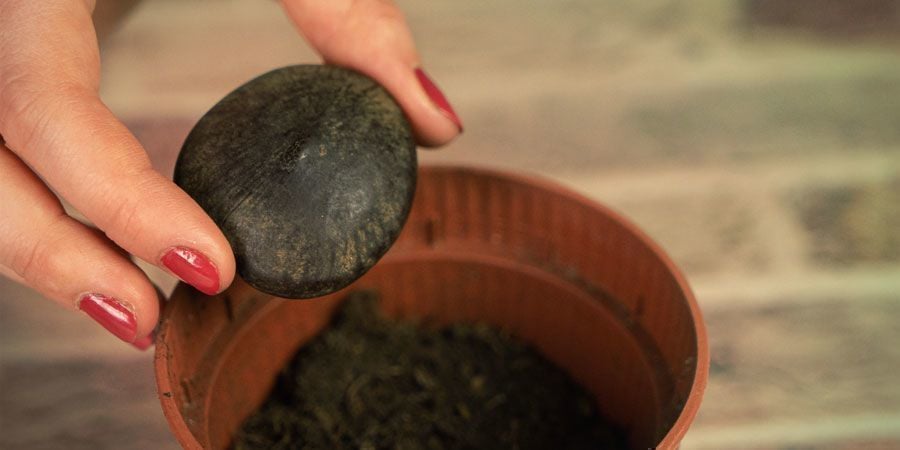
Going from dream seed to dream herb is quite the challenge, but not impossible. Before you begin growing, you'll need to prepare the seed to grow in the first place. In the natural world, the outer seed is slowly scarified until the embryo is exposed, allowing germination to begin. In your garden, however, you'll need to speed up the process. You can do this with sandpaper, achieving a more even scarification in turn, or you can be more direct and drill into the seed until the embryo is visible. Either way, once this is done, you'll submerge the seed in water for 24–48 hours, or until the seed expands. Get some soil in a tray with good drainage, saturate it completely, and sow the seed 50mm into the soil. If you've drilled a hole, make sure said hole is facing upward.
Cover this tray in cling wrap to make the environment more humid, leave it in an area with good sunlight, and periodically water when it seems dry. Germination should be done in about 3–4 weeks, after which the seed can be transferred into a pot. Once you transfer it, make sure the soil is wet, and make sure there is a tree nearby. That last part is important, as this herb is a climbing vine that survives by clinging onto nearby trees. This vine is also perennial, meaning the growing process never really stops. After a certain point, though, it'll bear fruit, and you'll have seeds once again.
OTHER DREAM HERBS
If all this has you interested in trying out other dream herbs, we've got some great news. Our online smartshop is full of these wonders of nature, all waiting to be tried by you. They all help with dreaming, yes, but each has its own special effects on the mind. African dream seed, for instance, increases your REM awareness, while others, such as Calea zacatechichi, are known to impart feelings of clarity and light-headedness. They're all wonderful in their own ways, and each is a journey waiting to be taken. As long as you stick to the proper dose and preparation methods, you have nothing to lose.

- France
- Germany
- International
- Italy
- Netherlands
- Spain
- United Kingdom
- United States
You might also like
-

 4 min
19 September 2023
5 Herbs To Help With Lucid Dreaming
If you are looking for a herbal aid to your lucid dreaming endeavours, we have the list for you. Below you will find a selection of traditional herbs all anecdotally thought to help dreamers reach a l ...
4 min
19 September 2023
5 Herbs To Help With Lucid Dreaming
If you are looking for a herbal aid to your lucid dreaming endeavours, we have the list for you. Below you will find a selection of traditional herbs all anecdotally thought to help dreamers reach a l ...
-

 5 min
20 January 2022
How Cannabis Influences Dreaming
We hear stories from cannabis-loving friends about their sudden vivid dreams upon taking a weed break. Some of them even recall having more nightmares than usual. Is there a connection between cannabi ...
5 min
20 January 2022
How Cannabis Influences Dreaming
We hear stories from cannabis-loving friends about their sudden vivid dreams upon taking a weed break. Some of them even recall having more nightmares than usual. Is there a connection between cannabi ...
-

 4 min
22 July 2021
Top 10 Lucid Dreaming Apps For iOS & Android
Lucid dreaming is a sensational experience. Explore new worlds, invent vivid scenarios, or dance with your favourite rockstar—all of this and more is achievable through the art of lucid dreaming. If ...
4 min
22 July 2021
Top 10 Lucid Dreaming Apps For iOS & Android
Lucid dreaming is a sensational experience. Explore new worlds, invent vivid scenarios, or dance with your favourite rockstar—all of this and more is achievable through the art of lucid dreaming. If ...
-

 10 min
12 July 2021
Lucid Dreams: Everything You Need To Know
Lucid dreaming has been known about for thousands of years, and yet it is still relatively unknown. Read on to discover easy-to-follow tips on how to start lucid dreaming yourself, and the answers to ...
10 min
12 July 2021
Lucid Dreams: Everything You Need To Know
Lucid dreaming has been known about for thousands of years, and yet it is still relatively unknown. Read on to discover easy-to-follow tips on how to start lucid dreaming yourself, and the answers to ...
-

 3 min
13 June 2019
Dream Yoga: Sleep Meditation
Dream yoga is thought to be one of the six-subtypes of yoga outlined by the Tibetan guru Marpa. The ancient practice of dream yoga is still in practice by monks to this day and consists of six stages. ...
3 min
13 June 2019
Dream Yoga: Sleep Meditation
Dream yoga is thought to be one of the six-subtypes of yoga outlined by the Tibetan guru Marpa. The ancient practice of dream yoga is still in practice by monks to this day and consists of six stages. ...
-
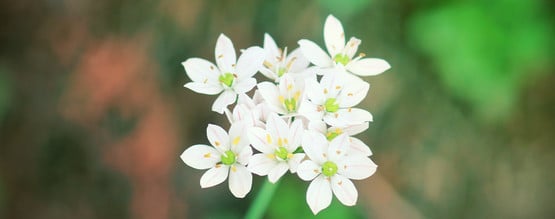
 2 min
13 June 2019
A Closer Look At The Dream Enhancing Silene Capensis
2 min
13 June 2019
A Closer Look At The Dream Enhancing Silene Capensis
-
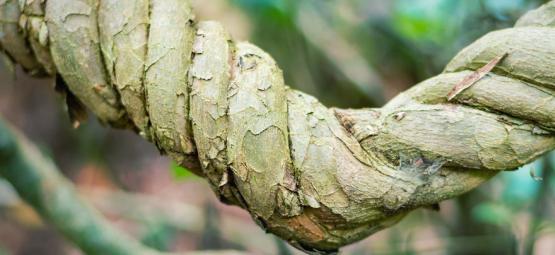
 3 min
26 February 2018
What Is African Dream Root And How Do You Prepare It?
Up until recently, the use of this flower root was only a tradition amongst a South African ethnic group. Everyone experiences the Silene capensis a little different but some reported effects are noto ...
3 min
26 February 2018
What Is African Dream Root And How Do You Prepare It?
Up until recently, the use of this flower root was only a tradition amongst a South African ethnic group. Everyone experiences the Silene capensis a little different but some reported effects are noto ...
-

 3 min
17 May 2017
Sleep Masks And Lucid Dreaming
A sleep mask can be a great help with relaxation and meditation, and if we want a good night’s sleep. But did you know that a sleep mask can also be an excellent lucid dreaming aid? There are severa ...
3 min
17 May 2017
Sleep Masks And Lucid Dreaming
A sleep mask can be a great help with relaxation and meditation, and if we want a good night’s sleep. But did you know that a sleep mask can also be an excellent lucid dreaming aid? There are severa ...
-

 3 min
29 June 2016
Are Magic Mushrooms Inducing a 'Waking Dream'?
Magic Mushrooms can show us vision beyond normal imagination. There is growing evidence to suggest this could be due to them inducing a waking dream, so what exactly is going on? ...
3 min
29 June 2016
Are Magic Mushrooms Inducing a 'Waking Dream'?
Magic Mushrooms can show us vision beyond normal imagination. There is growing evidence to suggest this could be due to them inducing a waking dream, so what exactly is going on? ...
-

 2 min
27 August 2014
Exploring The Dreamworld With Calea Zacatechichi
Originating from Mexico, Calea is a fascinating dream herb that has long been used by indigenous tribes as way of seeking guidance from the spirits. ...
2 min
27 August 2014
Exploring The Dreamworld With Calea Zacatechichi
Originating from Mexico, Calea is a fascinating dream herb that has long been used by indigenous tribes as way of seeking guidance from the spirits. ...
Categories
-
Seedshop
- Feminized Cannabis Seeds
- Autoflowering Cannabis Seeds
- Regular Cannabis Seeds
- F1 Hybrids
- CBD Seeds
- Zamnesia Seeds
- Top 10 Autoflowering Seeds
- Top 10 Regular Seeds
- Top 10 USA Cannabis Strains
- Top 10 Zamnesia Seeds
- Top 10 Feminized Seeds
- Beginner Strains
- Below 1% THC
- Classic Cannabis Strains
- Cup Winners
- F1 Hybrids
- Fast-Flowering Strains
- High CBD Strains
- High THC Strains
- Mix Packs
- Zamnesia Exclusive Collabs
- Amnesia Seeds
- Blueberry Seeds
- Cheese Seeds
- Diesel Seeds
- Gorilla Seeds
- Haze Seeds
- Kush Seeds
- Purple Seeds
- Skunk Seeds
- White Widow Seeds
- Zamnesia Seeds
- ACE Seeds
- Advanced Seeds
- Amsterdam Genetics
- Anesia Seeds
- Auto Seeds
- Barney's Farm
- Big Buddha Seeds
- Bomb Seeds
- BSB Genetics
- BSF Seeds
- Buddha Seeds
- Bulldog Seeds
- Cali Connection
- Cannarado Genetics
- CannaBioGen
- CBD Crew
- CBD Seeds
- Compound Genetics
- The Dank Seeds
- Dark Horse Genetics
- Delicious Seeds
- Devil Harvest Original
- Dinafem
- DNA Genetics
- Doctor's Choice
- Dr. Underground
- Dutch Passion
- Elite Seeds
- Eva Seeds
- Exotic Seed
- Expert Seeds
- FastBuds
- Female Seeds
- Fenocan
- Flash Auto Seeds
- French Touch Seeds
- Garden of Green
- GeneSeeds
- Genehtik Seeds
- G13 Labs
- Grass-O-Matic
- Greenhouse Seeds
- Grow Your Own (DNA)
- Growers Choice
- Homegrown Fantaseeds
- House of the Great Gardener
- Humboldt Seed Company
- Humboldt Seed Organization
- Kalashnikov Seeds
- Kannabia
- The Kush Brothers
- Light Buds
- Little Chief Collabs
- Medical Seeds
- Ministry of Cannabis
- Mr. Nice
- Nirvana Seeds
- Original Sensible
- Paradise Seeds
- Perfect Tree
- Pheno Finder
- Philosopher Seeds
- Positronics Seeds
- Purple City Genetics
- Pyramid Seeds
- Rare Dankness
- Reggae Seeds
- Reserva Privada
- Resin Seeds
- Ripper Seeds
- Royal Queen Seeds
- Sagarmatha Seeds
- Samsara Seeds
- Seedstockers
- Sensation Seeds
- Sensi Seeds
- Serious Seeds
- Silent Seeds
- Soma Seeds
- Spliff Seeds
- Strain Hunters
- Sumo Seeds
- Super Sativa Seed Club
- Super Strains
- Sweet Seeds
- T.H. Seeds
- Top Tao Seeds
- Vision Seeds
- VIP Seeds
- White Label
- World Of Seeds
- Zativo Seeds
- Seed Banks
-
Headshop
-
Vaporshop
-
Healthshop
-
Smartshop
- Top 10 Smartshop
- Zamnesia Gift Cards
- After Party
- Aphrodisiacs
- Aromatherapy
- Blue Lotus
- CBD Vape Juice
- Capsule Machines
- Crystals, Gemstones & Minerals
- Dream Herbs
- Drug Tests
- Extracts
- Happy Caps
- Herbal Tea
- Herbs & Seeds
- Incense
- Kanna
- Kratom
- LSA Seeds
- Mescaline Cacti
- Microdosing
- Nootropics
- Relaxing
- Salvia divinorum
- Smart Seeds
- Stimulants
- Supplements
- Tinctures
- Vape Herbs
-
Shroomshop
-
Growshop
- Top 10 Growshop
- Top 10 Plant Seeds
- All Seeds
- Cacti
- Chili & Pepper Seeds
- Companion Plants
- Edible Plant Seeds
- Exotic Seeds
- Flower Seeds
- Fruit Seeds
- Herb Seeds
- Interior Plant Seeds
- Microgreens
- Psychoactive Plant Seeds
- Sprouting
- Vegetable Seeds
- Wellness Plant Seeds
- After Harvest
- Climate Control
- Fertilizer
- Grow Tents
- Harvest, Dry & Cure
- LED Grow Lights
- Plant Seeds
- Propagation
-
Merchandise
-
Sale section
Account
Information
Our Offers
Our website won't work without these cookies activated. Therefore functional cookies can't be disabled.


















